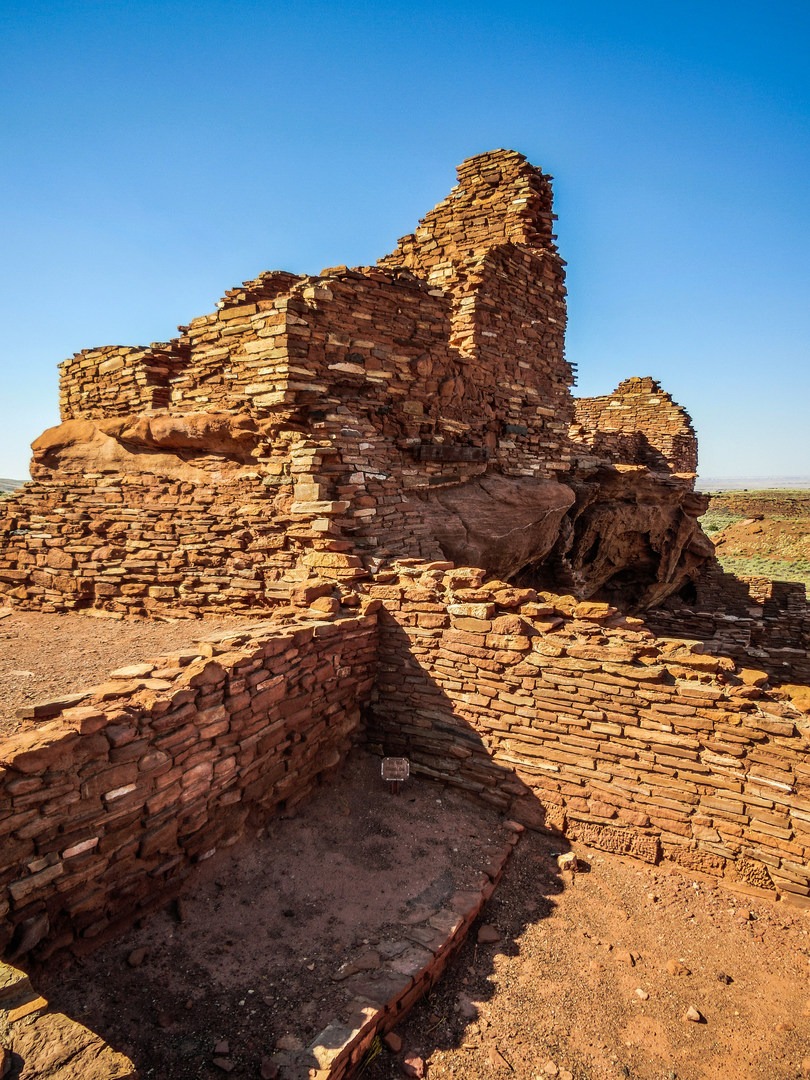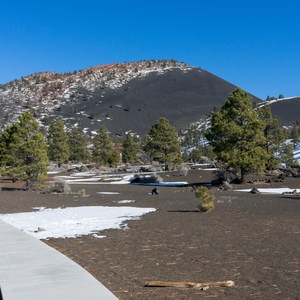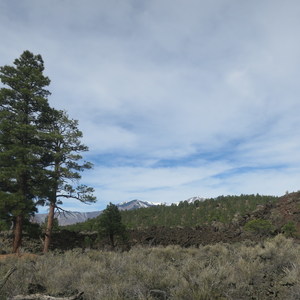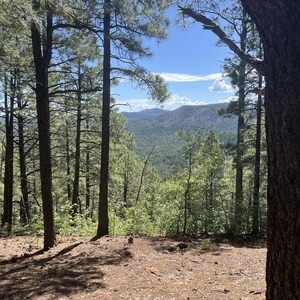Wupatki National Monument is one of three small monuments in the Flagstaff area, the other two being Walnut Canyon and Sunset Crater. The Pueblo ruins at Wupatki are some of the largest and tallest in the area and are fascinating to explore and learn about. This area was occupied by the Kayenta Anasazi from about 500 A.D. to the early 1200s. After that time the people moved on much like the pueblo people in other areas of the region. The descendants of the Wupatki people are found among the Hopi, Navajo, and Zuni peoples.The ruins are interesting in that they combine the pueblo building style common to the Four Corners region, but there are also elements of Mesoamerican influence, namely ball courts. Ball courts are generally found in cultures farther to the south, and Wupatki remains the most northerly known example of such activity. One of the ball courts has been restored to what it may have looked like while in use, and visitors can go inside and examine it.
Additionally, the area has striking geology where the sandstone of the Colorado Plateau meets the lava and ash from Sunset Crater. This makes for an interesting variety of rocks and features. Perhaps the most intriguing geologic feature of Wupatki is the natural blow hole located near the main pueblo of Wupatki. The blow hole is a natural vent in the ground linked to a subterranean system of cracks and fissures. Air flows in or out of the hole depending on the temperature and pressure difference between the climate underground and the weather outside. When it is hot and dry outside, the hole blows out a strong current of cool air that creates a natural air conditioning effect. When it is cool and moist outside the blow hole sucks air back into the hole. Perhaps this feature is a contributing factor to why people chose to settle this area?
While Wupatki is small, there are many things to do and see in the area. The park programs tend to focus more around archaeology for obvious reasons, but there are still plenty of opportunities for hiking, stargazing, and photography. During the spring and fall the park offers guided backpacking tours to an area of the monument that is usually not open to the public. Getting on one of the tours is subject to a lottery system.
Wupatki is often overlooked because of its proximity to the Grand Canyon National Park, but it is definitely worth spending a little time exploring the area's unique history. It is far less crowded, and while it may not offer the same facilities and opportunities for backcountry exploration as the Grand Canyon, it offers a better glimpse into the region's human history and makes for an excellent side trip.









Comments
Thanks for pointing that out, we've adjusted the coordinates and they are now accurate.
Sign In and share them.